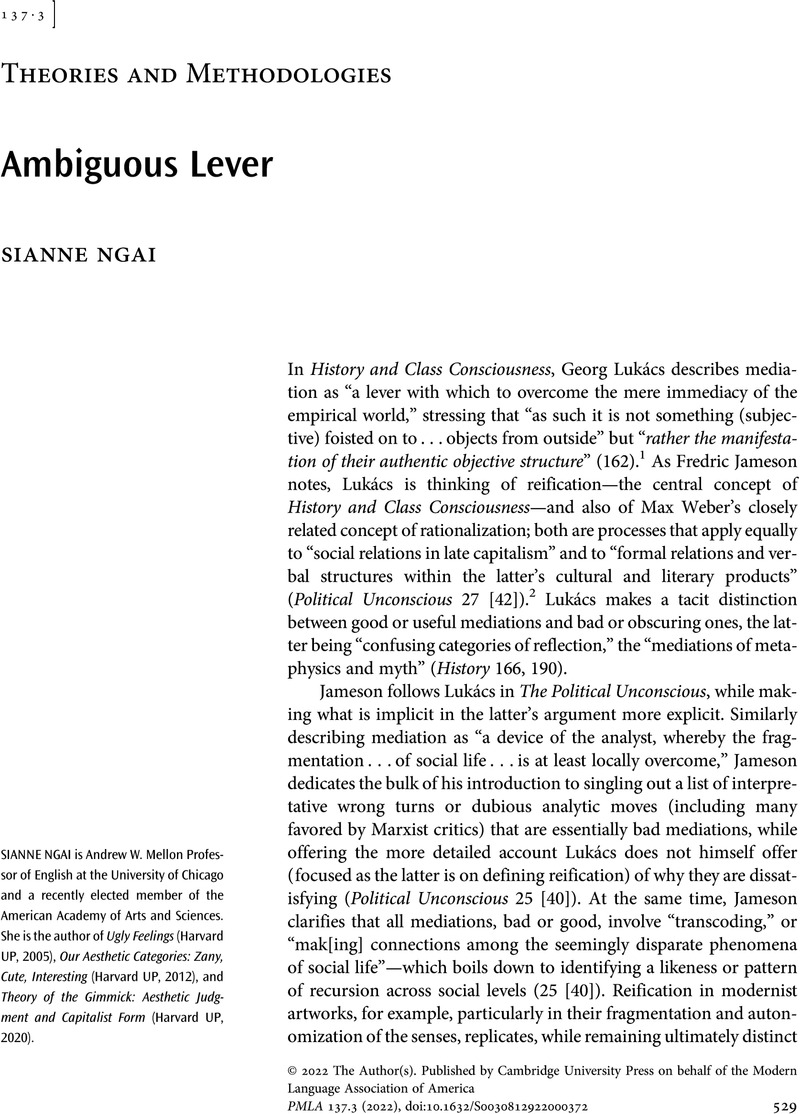No CrossRef data available.
Article contents
Abstract
An abstract is not available for this content so a preview has been provided. Please use the Get access link above for information on how to access this content.

- Type
- Theories and Methodologies
- Information
- Copyright
- Copyright © 2022 The Author(s). Published by Cambridge University Press on behalf of the Modern Language Association of America
References
Works Cited
Butler, Judith. Subjects of Desire: Hegelian Reflections in Twentieth-Century France. Columbia UP, 1987.Google Scholar
Jameson, Fredric. Marxism and Form: Twentieth-Century Dialectical Theories of Literature. Princeton UP, 1974.CrossRefGoogle Scholar
Jameson, Fredric. The Political Unconscious: Narrative as a Socially Symbolic Act. Routledge, 2002.Google Scholar
Lukács, Georg. History and Class Consciousness: Studies in Marxist Dialectics. Translated by Livingstone, Rodney, MIT Press, 1971.Google Scholar
Marx, Karl. Capital: A Critique of Political Economy. Vol. 1, translated by Fowkes, Ben, Penguin Books, 1976.Google Scholar
Wegner, Phillip E. Invoking Hope: Theory and Utopia in Dark Times. Minnesota UP, 2020.CrossRefGoogle Scholar


